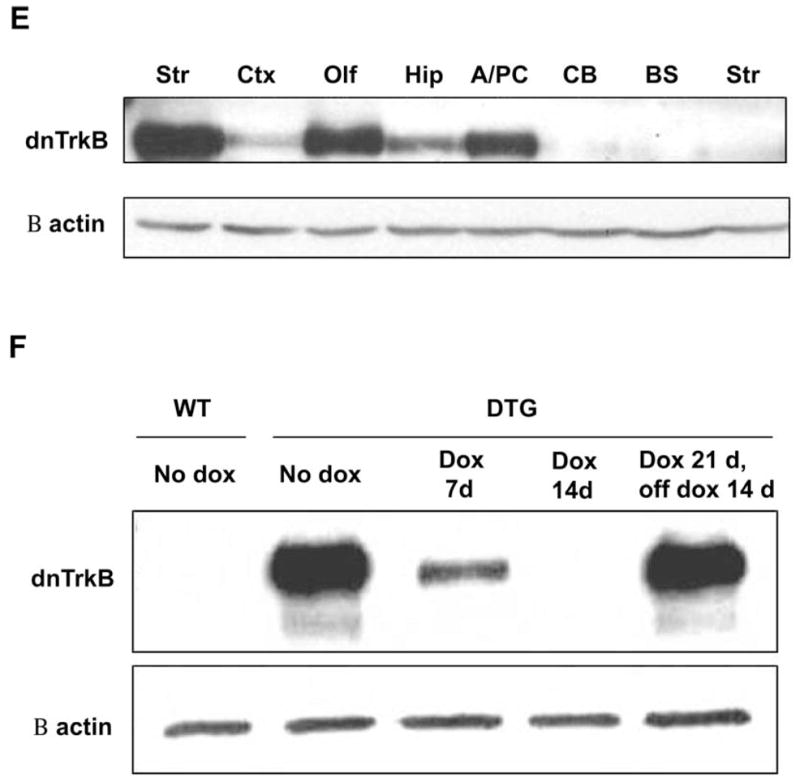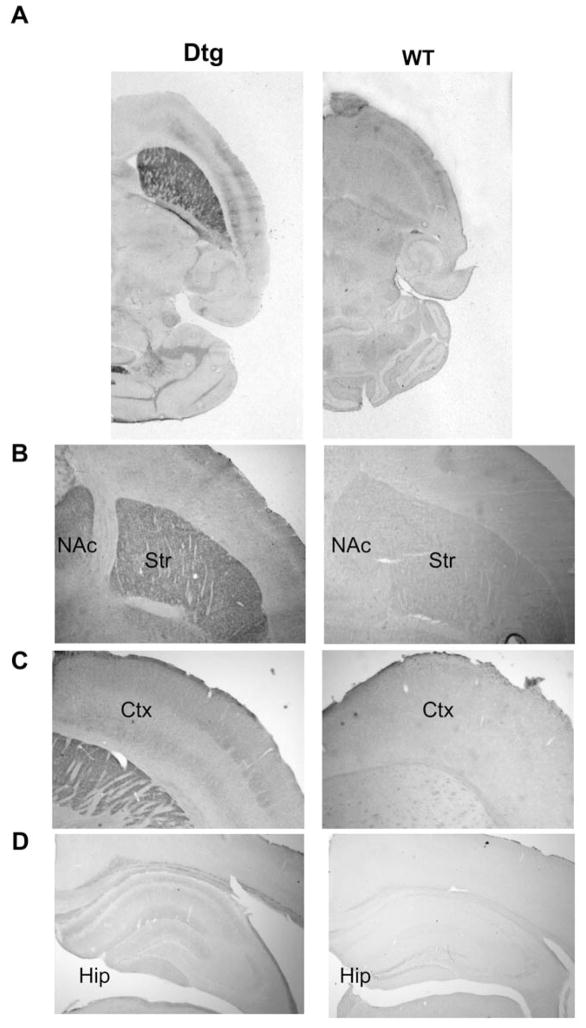Fig. 3.

DnTrkB is expressed throughout the forebrain of dtg mice and is regulated by doxycycline (dox). (A–D) Horizontal sections of dtg (left panels) and WT (right panels) brain that were processed for anti-dnTrkB immunoreactivity demonstrate expression of dnTrkB throughout the forebrain only in dtg mice. Expression is highest in striatum (Str) and nucleus accumbens (NAc) (B), with lower levels in cortex (Ctx) (C) and hippocampus (Hip) (D). N=2 experiments. (E) Western blot of homogenates from various brain regions of dnTrkB mice shows relative levels of dnTrkB expression in Str (lane 1), Ctx (lane 2) olfactory bulb (Olf; lane 3), Hip (lane 4), and amygdala/piriform cortex (A/PC; lane 5). As expected, expression is absent in cerebellum (CB; lane 6) and brainstem (BS; lane 7) of dtg mice and is absent from Str of WT mice (lane 8). N=3 experiments. (F) Dox administration for 7 days exerts no effect on dnTrkB expression in Str from WT mice (lane 1) because the transgene is not expressed in these animals. However, in dnTrkB mice dox treatment for 7 days reduces dnTrkB expression (lane 3) and after 14 days of treatment, dnTrkB is no longer detectable (lane 4). Expression of the dnTrkB transgene is restored following removal of dox from the drinking water for 14 days (lane 5). N=3 experiments.

